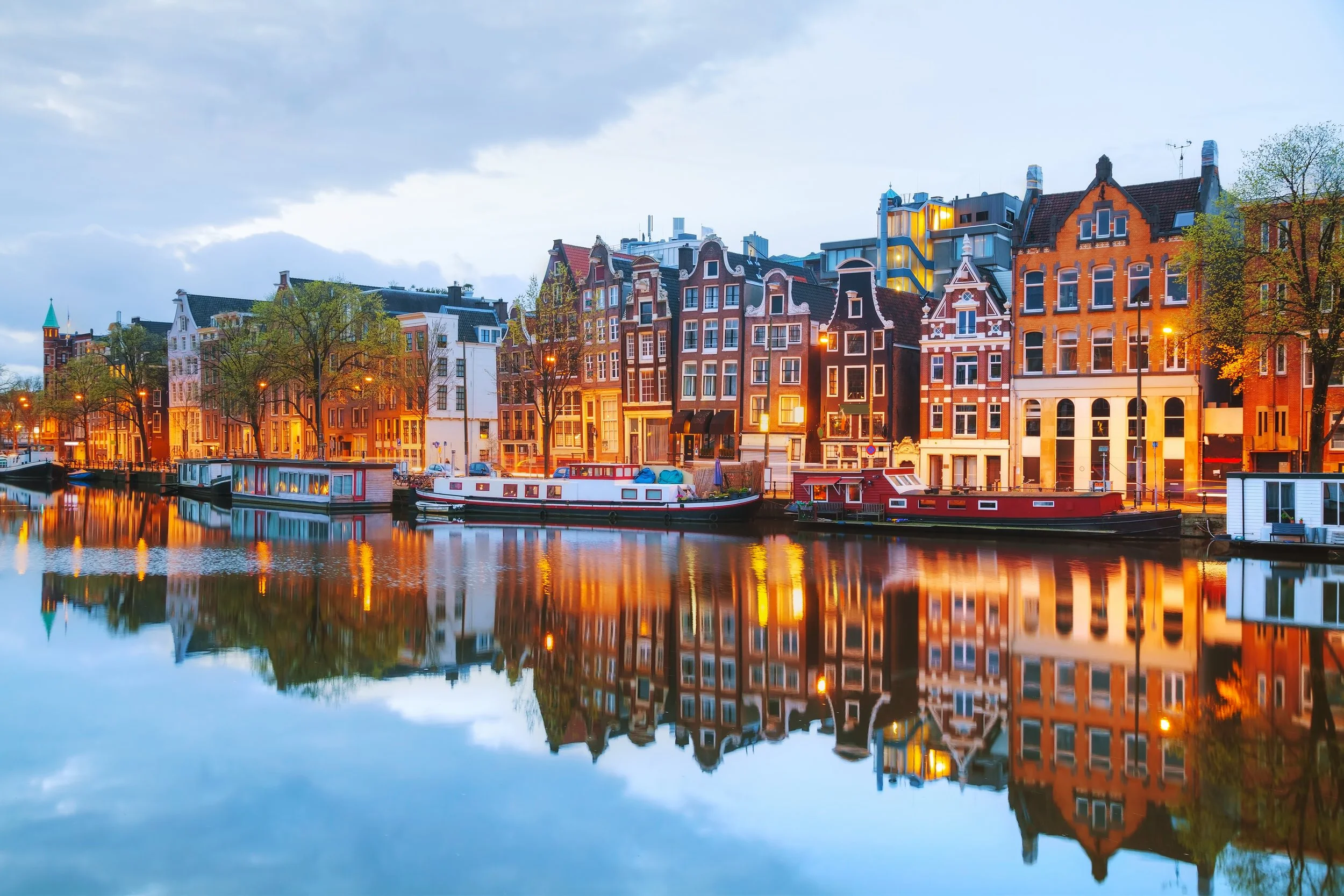Early People and History that Shaped New York City
Video of the New York skyline from the Brooklyn Bridge. Video Copyright 2024 by Mitchell Rocheleau
Why would we be interested in understanding the first settlers of New York City? New York has been a pivotal city in the history of America and the world. One of its ingredients of success lies in the mindset, values, philosophies, and way of life of the people who founded and grew the city. These ideas were manifested in the city's fabric and directly affected the shape of the urban environment.
For better or worse, it undoubtedly generated a unique city worthy of additional exploration. Where did this concoction of ideas and culture originate, and how did it evolve? This question led me to explore the history of the area's first settlers and how their visions became cemented into the physical and cultural fabric of New York City.
Lenape Natives
In its earliest days, the patch of land that we call Manhattan was comprised of a collection of Native American settlements amongst a flourishing and lush natural landscape, heavily populated with mature trees, rolling hills, and plentiful wildlife. Flanked on either side by two rivers, this land had sustained a rich variety of vibrant life. Several accounts of explorers describe the scent of the air as “sweet” and “fresh.”
The Lenape people were the primary native inhabitants of Manhattan. They were small game hunters and foragers. They were loosely organized, without villages, but best described as a series of nomadic seasonal campsites. The landscape was largely undeveloped, except for the sporadic camps and small agricultural fields the tribe would clear with controlled burns.
The Lenape people depended entirely on the land and sea. They engaged in trade with the surrounding groups of natives. There was no class hierarchy, and land ownership was a foreign idea for them. The women of the Lenape performed cooking, child-raising, and agricultural work. They were responsible for most of the food planting, storage, drying, and packing amongst their tribes.
The men of the Lenape focused on hunting the forests and fishing in the harbors. Because women were responsible for a large amount of daily activity, they demanded a significant voice in the communal affairs of the people.
Nature and wildlife were central to their daily lives, religious practices, and psychology. They established a naturally regenerative society with minimal impact that kept themselves and their environment healthy and thriving. They showed little interest in material accumulation or possessions. They cultivated only what they needed to survive from the land, forests, and seas.
Dutch Trading Post
A wave of enthusiasm for exploration hit Europe in the 1300s. Spanish, Portuguese, Dutch, and English people were eager to explore the unknown parts of the globe. Due mainly to the evolution of the monasteries, the steady growth of cities and trade economies in Europe generated excess profits.
Capitalism was developing in tandem, and wealthy cities, rulers, and families were eager to reinvest their profits into higher-risk endeavors with the hopes of significant financial returns, fame, and the establishment of profitable trade relationships.
In the early 1600s, several European nations had established trade with Native Americans up and down the coast of North America. Skins were a delicacy and sign of wealth in Europe, and the North American continent was plentiful. The most popular trade item was beaver pelts. Beaver oil was said to have unique healing properties. With trade stimulated in the area, interest was piqued to explore the undiscovered regions of the New World.
In 1607, Henry Hudson, an English captain employed by the Muscovy Company of England, embarked on an expedition to find a navigable water passage through the North American landmass to Asia. After two unsuccessful journeys, prospects of finding his route to the west looked grim. The Muscovy Company showed little interest in supporting a third voyage.
Hudson remained convinced that there was a route to the West. Other companies and nations became aware of his experience and attempted to hire him to captain their ships.
Hudson knew that the Dutch were another developing nation investing heavily in exploration and trade. The Dutch developed a culture of tolerance and acceptance of other cultures, primarily due to their interest in exploring and trading with a wide range of cultures worldwide. They accepted foreign cultures, religions, and ways of life. They were deeply interested in these different cultures, their philosophies, people, and, most notably, their products of trade.
Amsterdam had become the hub for the Dutch East India Company, which had yielded massive profits trading in sugar, cloth, tobacco, silk, glass, and many other products. Its shareholders received annual returns of nearly 30 percent.
When Hudson came to Amsterdam, regardless of his status as an English captain, the Dutch East India Company hired him, and he set sail in 1609 for his third attempt to find the Northwest Passage. He was initially instructed to sail east toward more established trade routes; however, shortly into the voyage, he redirected and went West to pursue his dream of finding the trade route to Asia. He sailed into New York Harbor and reported back the wealth of fur trading and plentiful natural resources available in the area.
In 1623, additional Dutch settlers came to the area as Dutch West India Company representatives. They would settle the area and, in 1626, purchase the land on the southern tip of Manhattan for 60 guilders, about $1,000 in today's value. The settlement was created more for the company than for the Dutch nation. They saw the establishment here as more of a factory or trading post rather than a colony. However, they would name it New Amsterdam. They began to lay out the establishment in traditional Dutch fashion, mimicking Dutch town planning principles.
A great effort was invested into carving out a canal from the landscape, which must have been incredibly difficult considering there is mostly bedrock in this area. However, they continued to attempt to recreate urban characteristics of their homeland, such as Amsterdam with its network of canals. The city would have looked like a graft had been taken from Amsterdam and stitched onto the native North American landscape.
In 1638, Andries Huddle received the right to purchase additional land from the native tribes. He divided and resold much of this land, stimulating an internal real estate market in the settlement. The land exchange mimicked the customs of Holland. The New York real estate economy had begun.
Petrus Stuyvesant, one of New Amsterdam’s most notable directors, began working to turn the settlement into a more refined and established community. He began surveying and laying out established property lines and regular streets. New Amsterdam’s first cobblestone-paved street is currently Stone Street. He implemented sanitation guidelines and a basic building code preventing wooden chimneys, thatched roofs, and regular maintenance of fireplaces.
The city began to feel more permanent and established. They began to rebuild some of the structures in town with a type of Dutch brick, some of which was imported from Amsterdam, and some even started being produced locally.
In 1653, Stuyvesant and the small town established the first municipal government. Order, productivity and peace were present. Soon after, they received word that the New England colonies planned to attack and overtake New Amsterdam. Stuyvesant ordered the immediate repair and bolstering of Amsterdam and the construction of a continuous wall spanning across the island. Its location lies on present-day Wall Street.
The Dutch culture, mindset, value system, and ways of life remained firmly intact in the early settlement. However, the growing power and ambitions of the British would threaten this.
British Overtaking
Tensions began to grow between the Dutch and the British. The British had been colonizing the surrounding part of the eastern landmass and were slowly encroaching on New Amsterdam. The British and Dutch also engaged in European conflicts in the Anglo-Dutch wars. Boundary line disputes began to emerge, and Britain began to see how critical it was for them to control the waterways that allowed ships to pass through the continent via the Hudson. To maintain control of the Hudson, they needed to control New Amsterdam.
More English settlers began to infiltrate New Amsterdam. King Charles II’s younger brother, James-Duke of York, became part of a group whose primary goal was to overtake control of Dutch commercial and trading establishments in various parts of the world. They became aware of the rising tensions in New Amsterdam and sought to overtake the colony in the name of the British.
In 1664, the Duke of York was granted the right as proprietor of the territories between the Delaware and Connecticut Rivers if he successfully seized New Amsterdam in the name of the British. York sent Colonel Richard Nicolls with four ships and two thousand men to New Amsterdam. The director Dutch director of the colony, Stuyvesant, was prepared to pose a defense; however, shortly after, he was persuaded to surrender.
The two sides drafted the Articles of Capitulation, which described the conditions for British occupation and control of the city. New Amsterdam and New Netherland would be renamed New York after the Duke of York.
It is important to note that in the Articles of Capitulation, the British allowed many Dutch customs, languages, religions, and businesses to remain intact. The Dutch would not be expelled, and none of their physical belongings or real estate would be seized. Nicholls would also permit the Dutch elite to continue trading with their home country. The Dutch culture would remain relatively intact, thus influencing and becoming an integral part of the DNA of this settlement for years to come. Many historians believe Dutch customs, philosophies, and culture founded the later American mindset. One of tolerance, individualism, liberalism, self-enterprise, entrepreneurship, and a melting pot for the world. This mindset would have a massive impact on the way the physical form of the city developed.
Following the Articles of Capitulation, the city's economy and life thrived for several years. The Dutch briefly restored control of the city; however, it was shortly retaken by the British as part of a peace treaty signed between the Dutch and English in February 1674, which halted much of their conflict worldwide.
Lasting Influence
More English settlers began to infiltrate into New York. The population increased as English merchants established their businesses importing sugar and flour. London mercantile houses began to take a serious interest in the financial opportunities in New York. As the English presence and markets grew, the Dutch aspired to preserve their culture in the city. They had established a set of beliefs that would cause the seedling to germinate into one of the most iconic metropolises in the world.
The city would experience many booms and busts, changing rapidly over time. It would evolve with new technologies and cultural trends. Finance, show business, and entertainment would take over the city. Global events such as the American Revolution, Civil War, Industrial Revolution, Great Depression, and World Wars would impose stress and suffering, causing the city to adapt and be resourceful.
Despite the city's dynamic and ever-evolving nature, I believe the Dutch's original mentality, value set, and culture fostered tolerance, individuality, free trade, self-reliance, and economic ingenuity that form the fundamental DNA of New York and America today.
Bibliography
Koolhaas, Rem. Delirious New York: A Retroactive Manifesto for Manhattan. The Monacelli Press, 2014.
Shorto, Russell. The Island at the Center of the World. Knopf Doubleday Publishing Group, 2005.
Wallace, Michael, and Edwin G. Burrows. Gotham. Oxford University Press, 1998.






























Notre Dame Cathedral had the power to embed itself into more than just the cityscape. It made its way into the hearts of the people of Paris. When the Cathedral was engulfed in flames on April 15th, 2019, we were reminded that the architecture around us impacts our lives beyond functionality. Principal and Architect of ROST Architects, Mitchell Rocheleau, discusses the history, architecture, and the architectural power of Notre Dame Cathedral.